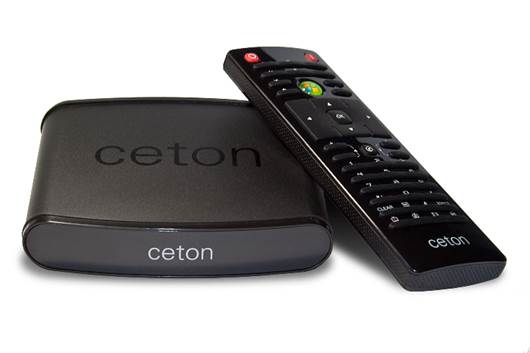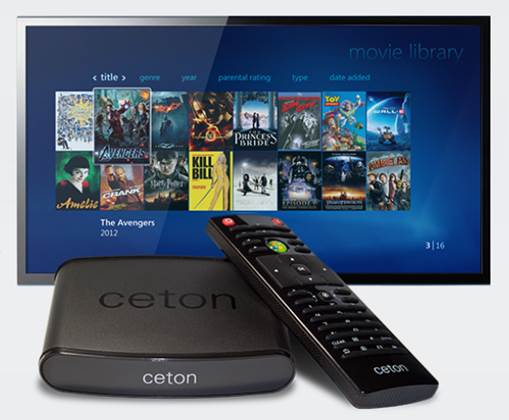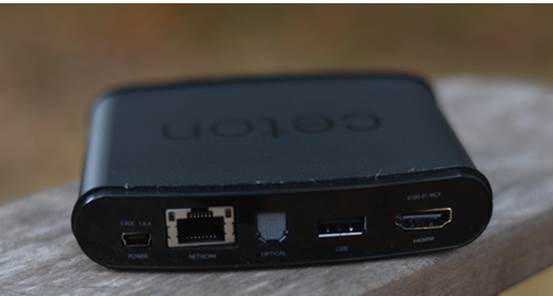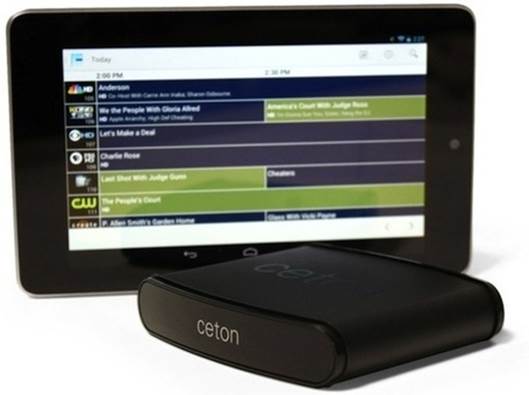Xbox? We don't need no stinkin’ Xbox!
Until the echo hit the street, the Xbox 360
was pretty much the only Windows Media Center Extender still on the market.
Companies such as D-Link and Linksys discontinued their extenders years ago
probably because they couldn’t compete with the subsidized price of Microsoft's
gaming console.

You're
looking at the best Windows Media Center Extender we've tested.
In case you’ve forgotten what a Windows
Media Center Extender is, here’s a quick refresher: Plug one of these networked
devices into your TV, pair it with a Windows computer on the same network. And
the Windows Media Center user interface from that PC along with all the movies,
photos, and music that PC can access will stream though the extender to the TV.
If the paired PC is outfitted with a TV
tuner, you can also stream live TV. We tested the Echo with an over-the-air USB
ATSC tuner (AVerMedia’s model H826SK) connected to an outdoor antenna and got
great results. If you subscribe to cable TV and equip your Media Center PC with
a Cable CARD tuner (from Ceton or any other manufacturer), you can stream any
channel you subscribe to, including premium channels such as HBO and Showtime
[but not on-demand programming). On top of that, you can record live TV onto
the PC’s hard drive, much like a TiVo or other brand of DVR that you might rent
from your cable company.

You
can stream any channel you subscribe to, including premium channels such as HBO
and Showtime [but not on-demand programming).
The Echo sells for $180 about the same
street price as a 4GB Xbox 360. But being about the size of a paperback book,
the Echo is a fraction of the Xbox 360’s bulk, and Ceton claims that it draws
about 90 percent less power.
The Echo connects to your TV via HDMI, and
it draws power from a supplied USB power adapter. It requires a hardwired
Ethernet connection, and the company recommends that the host PC also be
hardwired to your network. If you don't have CAT5 cable in your walls, the
company recommends deploying either a power line or MoCA (Multi-media over
Coax) network.

The
Echo connects to your TV via HDMI, and it draws power from a supplied USB power
adapter.
The Echo user experience is pretty much
identical to using a DVR, with a couple of exceptions: Ceton's remote control
is craptastically generic. More importantly, you can fast-forward and rewind
recorded TV; but unlike a DVR, you can't rewind live TV unless you're also
recording it. You can cure the first problem by purchasing Ceton's Companion
app for Android or iOS devices ($5 each) to turn your phone or tablet into a
remote.
As with those "whole-home DVR” systems
you see advertised on TV, you can pause playback on the TV that’s connected to
your PC in one room, go to a TV connected to an Echo in another room, and pick
up where you left off. Up to five Echo devices can be linked to a single PC
running Windows Media Center, and if that PC is equipped with multiple tuners,
each Echo can tune to a different channel.

If
you want to stream Internet video and media stored on your network, something
like Western Digital’s WDTV Live is a better choice
If you want to stream Internet video and
media stored on your network, something like Western Digital’s WDTV Live is a
better choice; out of the box, the Echo supports only the media formats that
Windows Media Center supports. That list includes codecs such as MPEG-2, H.264,
and MP3, but not container formats such as MKV or lossless audio codecs such as
FLAC. If you want to tune into and record cable or broadcast TV, and you don’t
care about Xbox games, the Echo is the way to go.
|
Specifications
§ Price:
$180
§ Website:
www.cetoncorp.com
§ Size:
3.9" x 0.8" x 4.3"
§ Power
Consumption: less than 5 watts
§ Outputs:
HDMI, Optical Digital Audio (TOSLINK)
§ Other
Connectors: USB 2.0, Mini USB (for power)
§ Network:
Ethernet (10/100/1000)
§ Audio
formats supported: Dolby Digital AC-3, MP3, PCM, WMA, WMA Pro
§ Photo
formats supported: BMP, GIF, JPG, PNG, TIF
§ Video
formats supported: MPEG-1, MPEG-2, H.264, WMV9
|